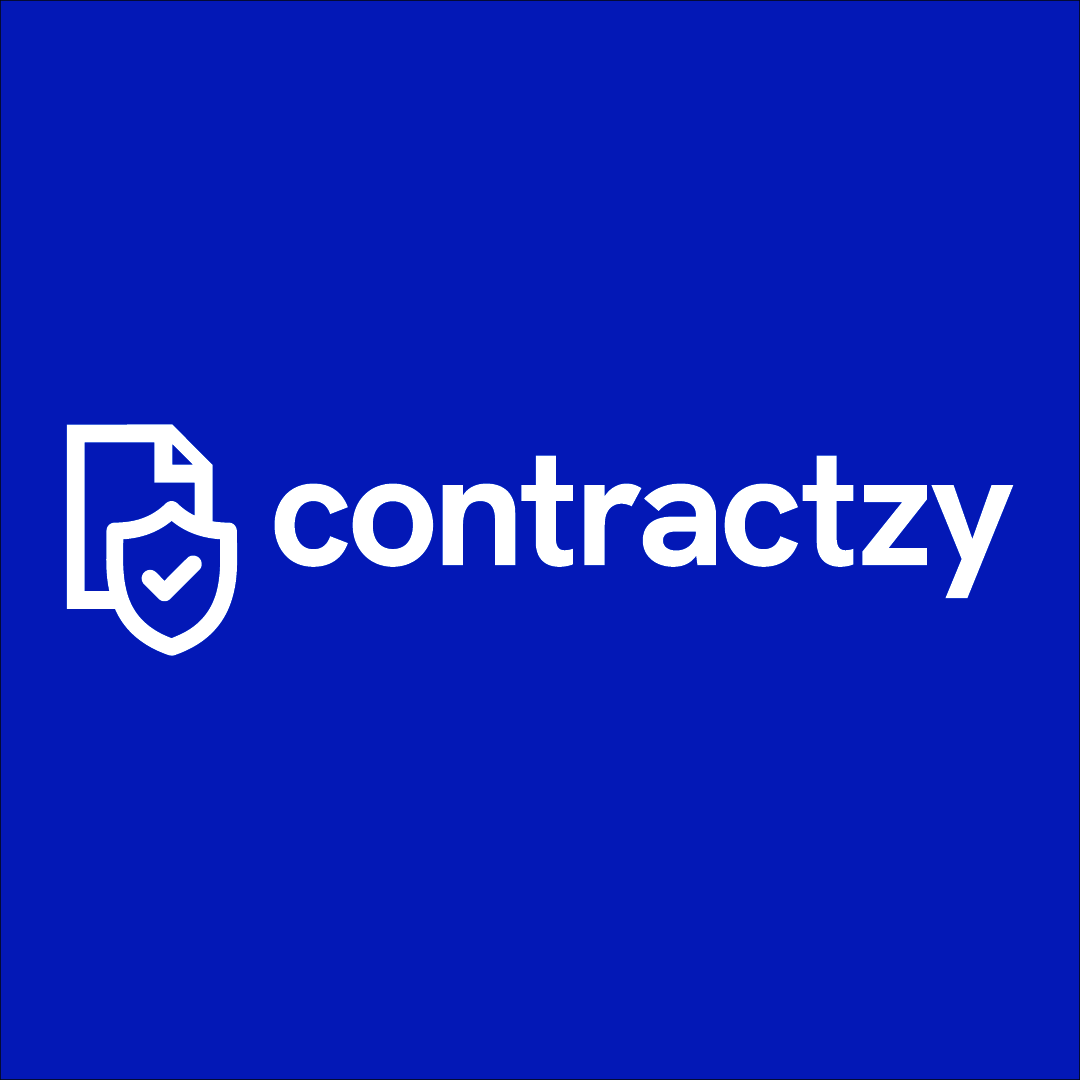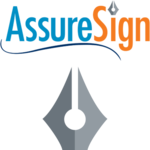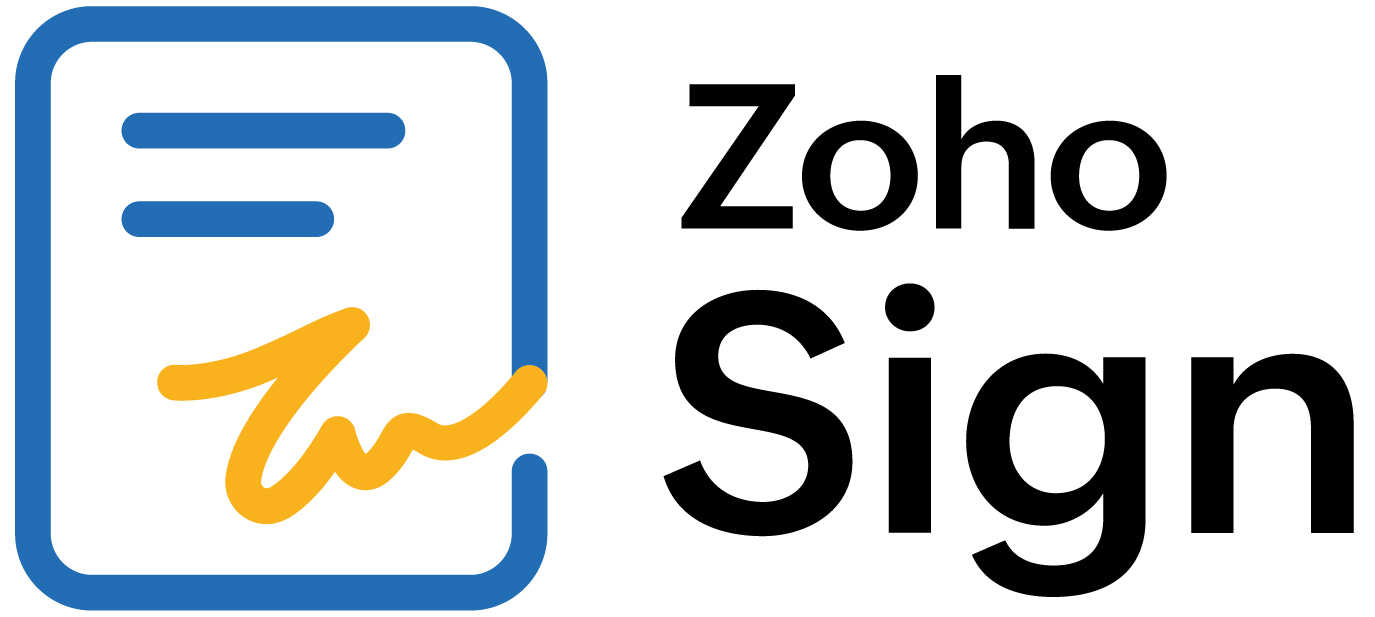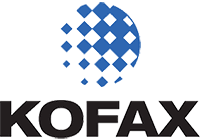What Is Electornic Signature Software?
A contemporary technological solution that allows people to sign papers electronically is electronic signature software. It speeds up, simplifies, and secures the signature process by doing away with the need to print, sign, and scan actual papers. Whether it's for internal corporate processes or transactions involving customers, this software is made to make document signing more efficient.
A distinct digital code or signature is used to create the digital signature, which is then encrypted and affixed to the document. The legitimacy and integrity of the signed document are guaranteed by this code, which functions as a legally binding signature. To further improve security and compliance, electronic signature software also provides further features like audit trails, timestamping, and multi-factor authentication.
Convenience is one of the key benefits of electronic signature software. Users can use any internet-connected device to sign papers at any time and from any location. Because it removes the need for physical signatures and enables quicker contract turnaround times, this is particularly advantageous for remote or mobile teams. Implementation-wise, electronic signature software is simple to use and readily incorporates into current company procedures and workflows.
In order to accommodate various user preferences and needs, it also provides a range of signing choices, such as e-signatures, written signatures, and pictures of real signatures. It's crucial to assess an electronic signature program's security features, adherence to legal requirements like eSign and GDPR, and compatibility with other software platforms before making a purchase.
To choose which one best suits your company's requirements, you should also look at price plans and customer service alternatives. All things considered, electronic signature software provides a cutting-edge and effective way to expedite document signing procedures, boost security, and enhance corporate operations. You may choose the best electronic signature software to suit your unique business requirements by carefully weighing the important features and criteria when choosing a software supplier.
What Are The Recent Trends In Electornic Signature Software?
As more companies and individuals look for a convenient and safe way to sign papers, electronic signature software has grown in popularity in recent years. The market for electronic signature software develops along with technology, giving rise to fresh and creative ideas that seek to improve efficiency and user experience. We'll go over the latest developments in electronic signature software in this buyer's guide, which you should take into account before buying.
1. An Interface That Is Responsive To Mobile Devices: The move toward a mobile-friendly interface is one of the major trends in electronic signature software. Both senders and signers find it advantageous to have software that works on smartphones and tablets, especially with the growing popularity of remote work and on-the-go business transactions. This feature makes the process easier and more accessible by enabling consumers to sign documents on any device.
2. Combining More Tools: Software integrations have become essential for enterprises in today's technologically advanced environment. The same is true of electronic signature software, and numerous suppliers are already providing connections with well-known programs including CRM systems, Microsoft Office, and Google Drive. This trend saves time and boosts productivity by enabling users to easily incorporate the e-signature process into their current workflow.
3. More Sophisticated: Techniques for authentication Businesses that handle sensitive data are very concerned about security. Enhancing the authentication procedure to guarantee the legitimacy of signatures is the main focus of recent developments in electronic signature software. Advanced techniques like multi-factor authentication and biometric authentication, such fingerprint or facial recognition, can be used to confirm the identity of the signer.
4. Workflows: that are digital The days of scanning, signing, and printing documents are long gone. Businesses can now design fully digital procedures for document approval and signing with electronic signature software. This trend lowers costs and increases productivity by enabling a more efficient and paperless process.
5. Capabilities Of AI And Machine Learning: Electronic signature software now incorporates machine learning (ML) and artificial intelligence (AI) technologies, offering a more sophisticated and user-friendly interface. By helping with data extraction, document organization, and predictive tagging, these tools can improve the accuracy and efficiency of the e-signature process.
Benefits Of Using Electornic Signature Software
For companies, organizations, and people seeking a contemporary and effective method to manage document-signing procedures, electronic signature software has emerged as a crucial tool. Due to its many advantages, it is a preferred option for a large number of people worldwide. We will examine the main benefits of utilizing electronic signature software in our buyer's guide, enabling you to make an informed choice.
1. Time And Cost Savings: Compared to traditional paper-based document signing, electronic signature software drastically cuts down on both time and expense. Users can save time and money by not having to print, send, or store paper documents when they can sign them digitally. Additionally, it removes the need for documents to be delivered physically, which lowers expenses for mail or courier services.
2. Enhanced Security: To guarantee the privacy, integrity, and authenticity of signed documents, electronic signature software makes use of tamper-proof technology and cryptography. In contrast to pen and paper signatures, this indicates that the document is encrypted and only authorized persons may access it, adding an additional degree of protection.
3. Convenience And Flexibility: Documents can be signed using electronic signature software on any internet-connected device, at any time, and from any location. This provides unmatched flexibility and convenience by enabling parties to remotely sign documents, doing away with the need for travel or in-person meetings. Businesses with remote workers, clientele from other countries, or those operating in multiple time zones can particularly benefit from this.
4. Increased Productivity And Efficiency: By automating the document-signing process, electronic signature software reduces the possibility of human error and does away with the necessity for manual handling. Users are able to concentrate on other important duties as a result of the increased productivity and efficiency. In order to keep everyone informed throughout the signing process, it also offers real-time tracking and alerting tools.
5. Ecologically Friendly: Using electronic signature software is an eco-friendly choice because it uses less paper. In line with sustainable practices, this not only aids in the preservation of natural resources but also lowers the carbon footprint of both persons and companies.
Important Factors To Consider While Purchasing Electornic Signature Software?
Software for electronic signatures has grown to be a necessary tool for companies and organizations of all kinds. It provides a safer and more effective method of getting signatures on papers, doing away with the need for paper-based procedures. Customers may find it difficult to choose the best electronic signature software for their requirements due to the abundance of options available on the market. The following crucial elements should be taken into account when buying electronic signature software in order to assist you in making an informed choice:
1. Safety: When it comes to software for electronic signatures, security should come first. Verify that the program complies with industry rules including the Electronic Signatures in Global and National Commerce (ESIGN) Act and the General Data Protection Regulation (GDPR). To guarantee the secrecy and integrity of your papers and signatures, look for features like encryption, authentication, and tamper-proof audit trails. To avoid unwanted access, make sure the program supports several security levels, such as two-factor authentication.
2. Usability: Both the sender and the signer should be able to easily navigate and use the electronic signature software you select. Take into account the user experience in general as well as how simple it is to upload, send, and sign documents. To save time and effort when preparing documents, look for features like configurable templates and drag-and-drop capability.
3. Combination: For a smooth workflow, electronic signature software must be integrated with your current business tools and procedures. Seek software that provides integration with well-known programs such as CRM systems, Google Suite, and Microsoft Office. As a result, there will be no need to transition between platforms and the e-signature procedure would be streamlined.
4. The Ability: To move about It is essential to have mobile-ready electronic signature software in the fast-paced digital world of today. This makes the signing procedure more convenient and effective by enabling you to get signatures while on the go, even from far-off places. Check to see whether the program has a responsive website or mobile app that provides a comparable experience to the desktop version.
5. Cost: Even if there are many advantages to using electronic signature software, it's important to take price into account. Since various e-signature software frequently have varying pricing structures, it's critical to assess your company's requirements and select a package that fits within your means. Furthermore, keep an eye out for any hidden expenses, such storage fees, per-document prices, or extra fees for things like API connectivity.
6. Customer Service: When it comes to software for electronic signatures, dependable customer service is crucial. Seek out suppliers with a responsive customer service team and a variety of assistance avenues, including phone, email, and live chat. This will ensure that any issues or concerns are addressed promptly, minimizing any workflow disruptions.
What Are The Key Features To Look For In Electornic Signature Software?
Because it makes signing faster and more secure and does away with the need for paper documents, electronic signature software has become a vital tool for companies and organizations of all kinds. However, selecting the best option for your unique needs might be difficult due to the abundance of options available on the market. Here are the main characteristics of electronic signature software to help you make your choice.
1. Compliance And Security Measures: Adherence to industry and regulatory requirements is one of the most important factors to take into account when choosing electronic signature software. Seek out software that complies with rules like UETA, ESIGN, and eIDAS. It should also have strong security features to safeguard private documents and guarantee the authenticity of the signature. Maintaining a safe signing process requires features like encryption, audit trails, and multi-factor authentication.
2. Variety Of Signing Alternatives: To meet the various needs of businesses, a top-notch electronic signature program should provide a range of signing possibilities. These days, consumers choose to sign documents on a variety of devices, including desktop computers, tablets, and smartphones. Seek out software that accepts a variety of signing techniques, such as biometric, touchpad, and mouse signing.
3. Customization Of Documents: The program should make it simple to alter document templates, signature fields, and branding components. This enables both parties to have a smooth and expert signing experience. To save time and effort when writing new papers, look for software with an intuitive user interface and adjustable templates.
4. Integration Capabilities: The software's capacity to interface with other platforms or products you use is a crucial element to take into account. Seek out software that provides API connectors with well-known programs like as Google Docs, Microsoft Office, and Salesforce. This removes the need for manual data entry and document transfers and guarantees a seamless process.
5. User-Friendly Interface: Regardless of how powerful the software's features are, it should have an intuitive user interface that is simple to use and comprehend. Seek software with an easy-to-understand interface, unambiguous instructions, and a low learning curve. You'll save time and money when it comes to onboarding and training new users.
6. Advanced Collaboration Features: Electronic signature software should facilitate cooperation, which is an essential component of any organization. Seek out software that lets several people work together on a single document, leave comments, and monitor changes. This guarantees effective and clear communication between the signing process's participants.
Why Do Businesses Need Electornic Signature Software?
Software for electronic signatures has grown to be a necessary tool for companies of all sizes and in all sectors. By doing away with paper records, in-person meetings, and physical signatures, this cutting-edge technology speeds up, secures, and simplifies the contract signing process. Increasing operational efficiency is one of the primary reasons why companies require electronic signature software.
Printing, signing, and scanning papers can be laborious and time-consuming when done the old-fashioned way. By streamlining these procedures, electronic signature software enables companies to complete and sign contracts in a matter of minutes as opposed to days or weeks. Electronic signature software provides improved security features in addition to efficiency.
Digitally signed documents are safely saved and secured, greatly lowering the possibility of losing or altering crucial contracts. Businesses can rest easy knowing that their private data is safe thanks to this. Additionally, improved cooperation and communication between the parties involved in the contract signing process are made possible by electronic signature software.
All parties may be informed about the document's progress with features like real-time notifications and status tracking, which removes the need for repeated emails or phone conversations. Software for electronic signatures is also reasonably priced and eco-friendly. Businesses can save money and lessen their carbon footprint by doing away with the need for paper and ink.
This is particularly advantageous for companies that routinely manage a high volume of contracts. Last but not least, companies that operate internationally like electronic signature software because it complies with international laws and regulations. It offers a safe and dependable way to get partners' and clients' signatures across international borders while guaranteeing that contracts are valid and legally binding.
How Much Time Is Required To Implement Electornic Signature Software?
The size and complexity of your company, the software you select, and the degree of customisation necessary can all affect how long it takes to install electronic signature software. On the other hand, the implementation procedure often takes a few days to a few weeks. Before choosing a software solution, it is crucial to first perform a comprehensive assessment of the needs and requirements of your company.
This could entail listing the main features and functionalities you need from the software and determining the problems with your present document signing procedure. The next step after choosing an appropriate electronic signature program is to create an account and customize it to meet the requirements of your company.
Usually, this entails generating document templates, granting permissions, and creating user accounts. This phase may take a few hours to many days, depending on the software. Integrating the program with your current apps and systems is the next important step. This can entail integrating it with your document storage system, project management program, or CRM.
The intricacy of your integrations and the degree of support offered by the software supplier will determine how long this stage takes. Lastly, training your team on the proper usage of the program is crucial. This could entail giving them user guides, holding training sessions, and responding to any questions they might have. The size of your staff and their experience with comparable software will determine how long training takes.
What Is The Level Of Customization Available In Electornic Signature Software?
Different degrees of customisation are available in electronic signature software, enabling businesses to modify the program to meet their unique requirements. The provider and the particular features and tools that their program offers usually determine the degree of customisation that is possible. Basic customization features, such adding business logos, colors, and branding to the electronic signature interface, are provided by certain vendors of electronic signature software.
This enables businesses to conduct digital commerce while preserving a consistent and professional image. More sophisticated customization choices, such the ability to design unique templates for often used documents or forms, are provided by other suppliers. Sending and signing papers can be made simpler and more effective by pre-filling these templates with particular fields and components.
Additionally, certain electronic signature software enables access limits and workflow process modification. Larger organizations with numerous departments and teams may find this especially helpful as it enables the customisation of permissions and approval procedures according to specific roles and responsibilities. Additionally, some software suppliers give businesses the choice to combine the electronic signature software with their current software and processes.
Because they can access and use the electronic signature features within their accustomed and preferred platforms, consumers benefit from a more smooth and personalized experience. All things considered, the degree of personalization offered by electronic signature software can significantly improve user satisfaction and boost organizational productivity. To make sure they select the best solution for their company, purchasers should carefully consider their demands and weigh the customization options provided by various providers.
Which Industries Can Benefit The Most From Electornic Signature Software?
Businesses now manage documents more quickly, effectively, and securely thanks to electronic signature software, which has completely changed the industry. Numerous industries have made extensive use of this state-of-the-art technology, each of which has benefited from its special qualities. We'll look more closely at which industries stand to gain the most from electronic signature software in our buyer's guide, as well as what to look for before making a purchase.
1. Healthcare Industry: From patient permission papers to medical records and insurance documentation, the healthcare industry manages a significant amount of paperwork. In addition to saving time and removing paperwork, using electronic signatures in this sector guarantees adherence to HIPAA requirements. Healthcare providers may expedite medical record operations, enhance patient satisfaction, and safely gather and preserve patient signatures with electronic signature software.
2. Legal Sector: Contractual agreements, confidentiality agreements, and other legal documents are largely dependent on signatures in the legal sector. By lowering the possibility of fraud or manipulation, electronic signature software offers a more practical and safe method of verifying signatures. To ensure their authenticity in court, legal firms can also keep track of the time and location of the document's signature with tools like audit trails and document tracking.
3. Real Estate Industry: A lot of documentation and several parties are involved in real estate transactions. Electronic signature software is a popular option in the real estate sector since it makes the signing process easier for sellers, buyers, and agents. Additionally, the software enables remote signing, which saves time and expedites the closing process by doing away with the necessity for in-person presence.
4. Finance Industry: The financial industry handles sensitive data that needs to be highly secure and compliant. The confidentiality and integrity of financial documents are guaranteed by the encryption and authentication features offered by electronic signature software. Financial organizations can lower administrative expenses and enhance customer satisfaction by streamlining procedures like loan applications, account openings, and other paperwork with electronic signatures.
5. Human Resources Sector: HR divisions deal with a lot of paperwork, including performance reviews, benefits enrollment, and employee onboarding. HR professionals can more easily handle and track signatures by using electronic signature software, which streamlines the signing process for documents such as employment contracts, offer letters, and non-disclosure agreements. This decreases the need for physical storage space for paper records, saves time, and gets rid of manual errors.
Conclusion
It is clear from in-depth investigation and analysis that electronic signature software is now necessary for companies of all kinds. It is impossible to overlook the many advantages that electronic signature software provides, from improving productivity and cutting expenses to simplifying document workflows. All of the crucial elements of electronic signature software that a buyer should take into account before making a purchase have been addressed in this buyer's guide.
To assist you in making an informed choice, we have looked at the main features, pricing structures, integration potential, and security protocols. Understanding your unique business requirements and picking the appropriate solution are essential when choosing an electronic signature software. The best electronic signature programs available are listed here, each with special features and products.
With the help of this guide, you may assess and contrast many possibilities and select the one that best suits your company's objectives. Furthermore, we have emphasized the significance of a user-friendly interface and device compatibility, as these elements can significantly affect the software's usage and rate of adoption. We advise including important stakeholders in the decision-making process and extensively testing the product using demos or free trials.
This will guarantee a seamless implementation procedure and assist in assessing how well the program meets your business needs. To sum up, purchasing electronic signature software can greatly enhance your company's operations and result in time and resource savings. We hope that this buyer's guide has helped you make the best choice for your company by offering insightful information. Go ahead and start using electronic signature software to create a document management system that is safer and more effective.






















